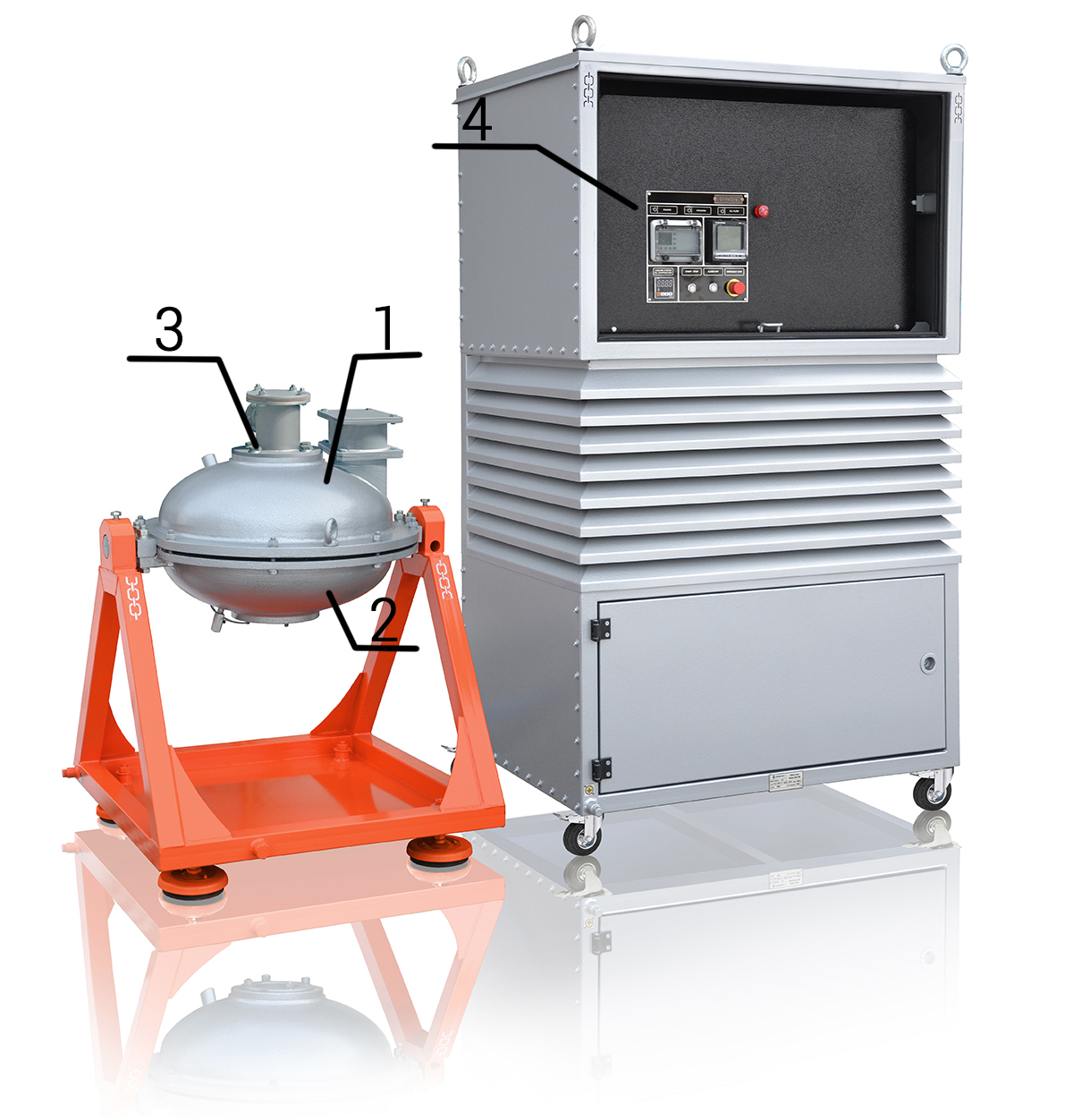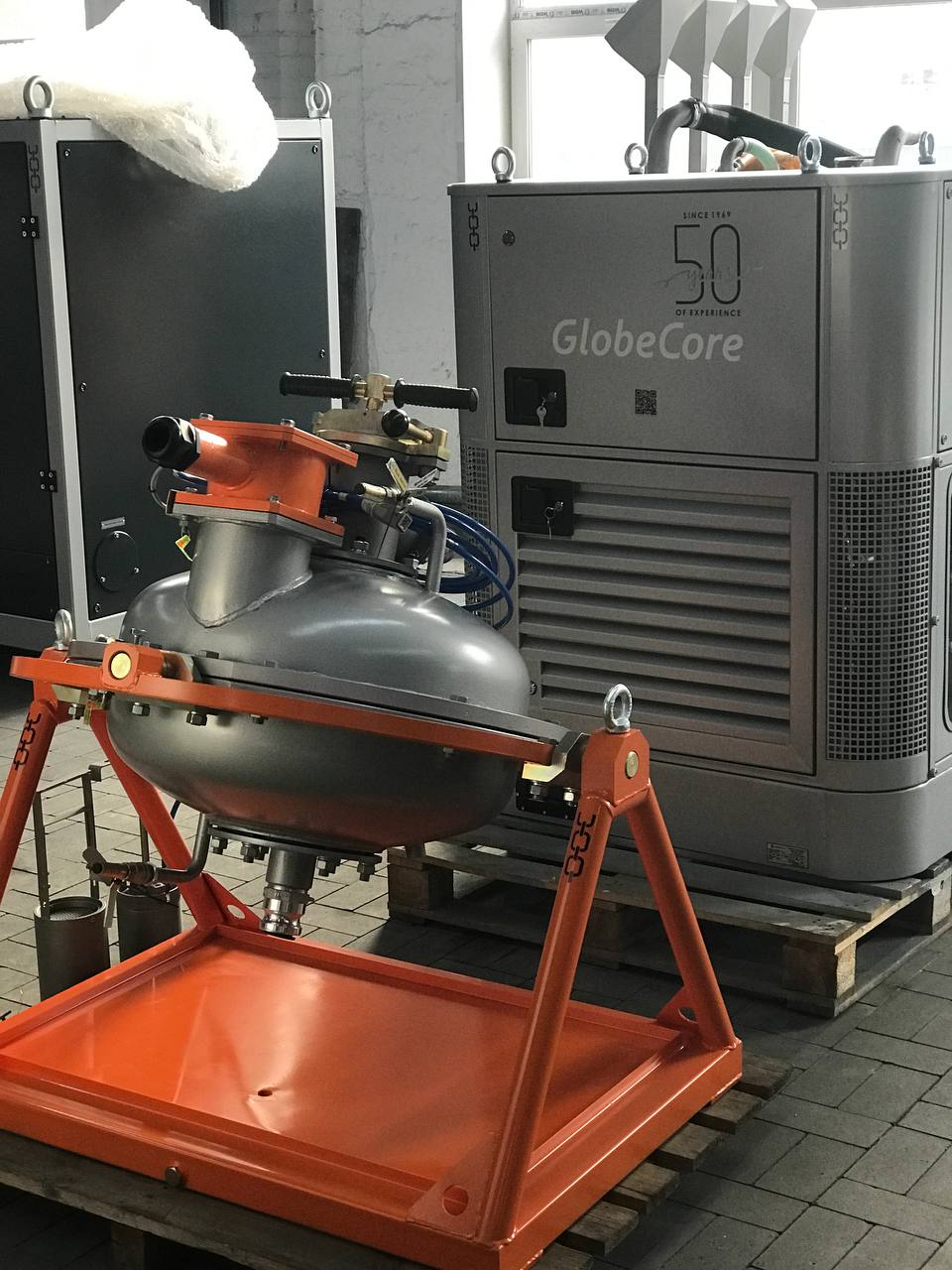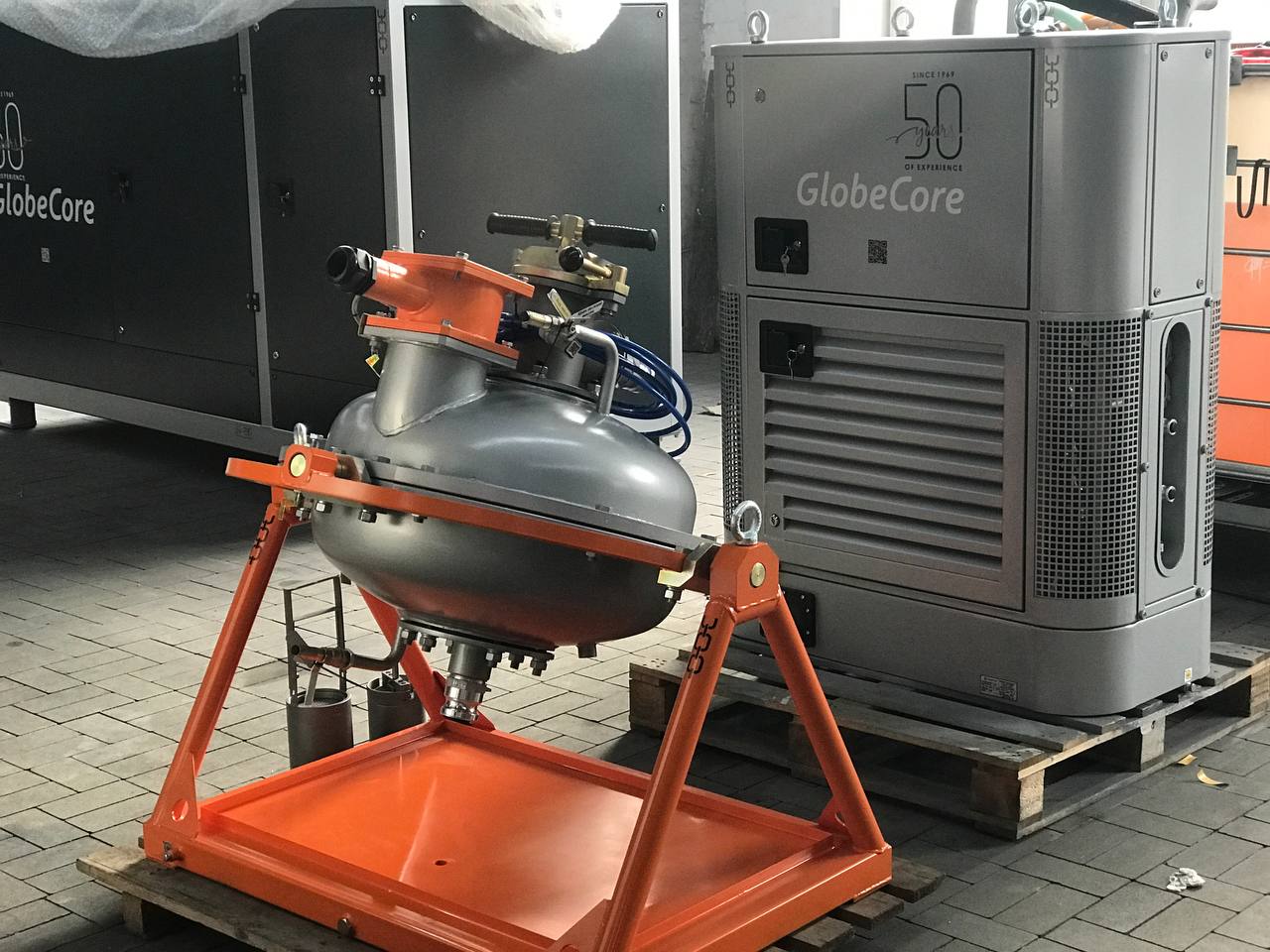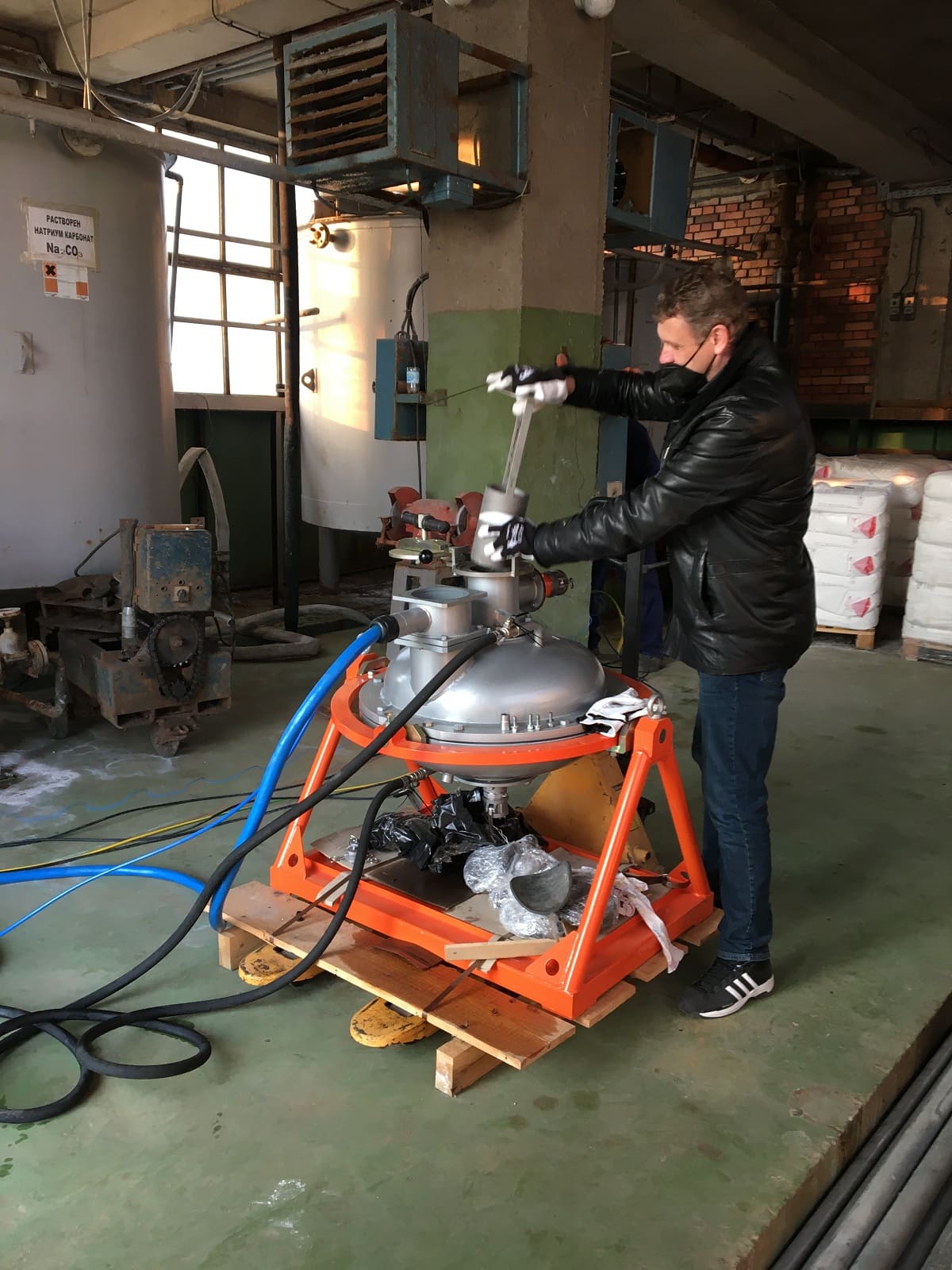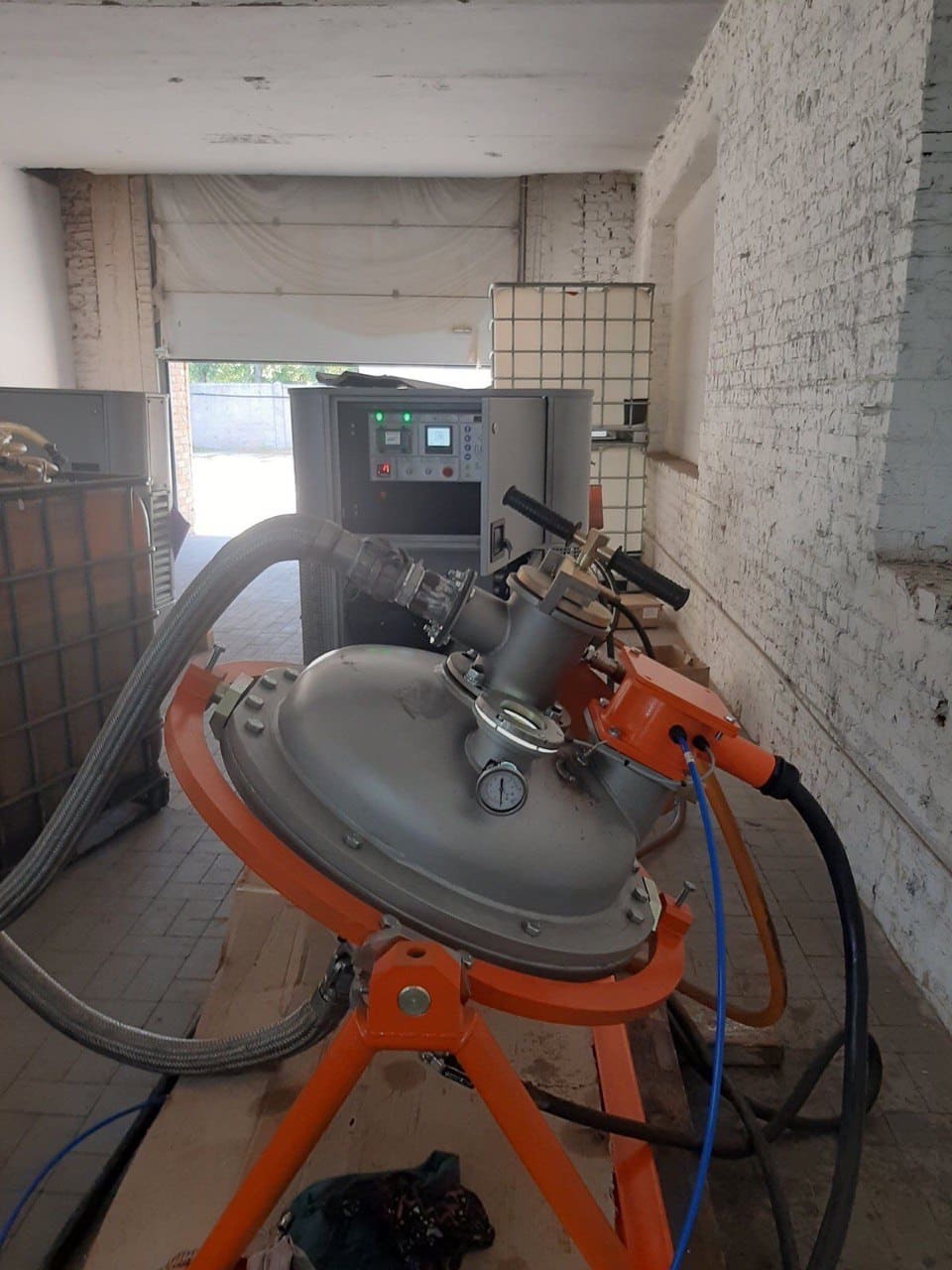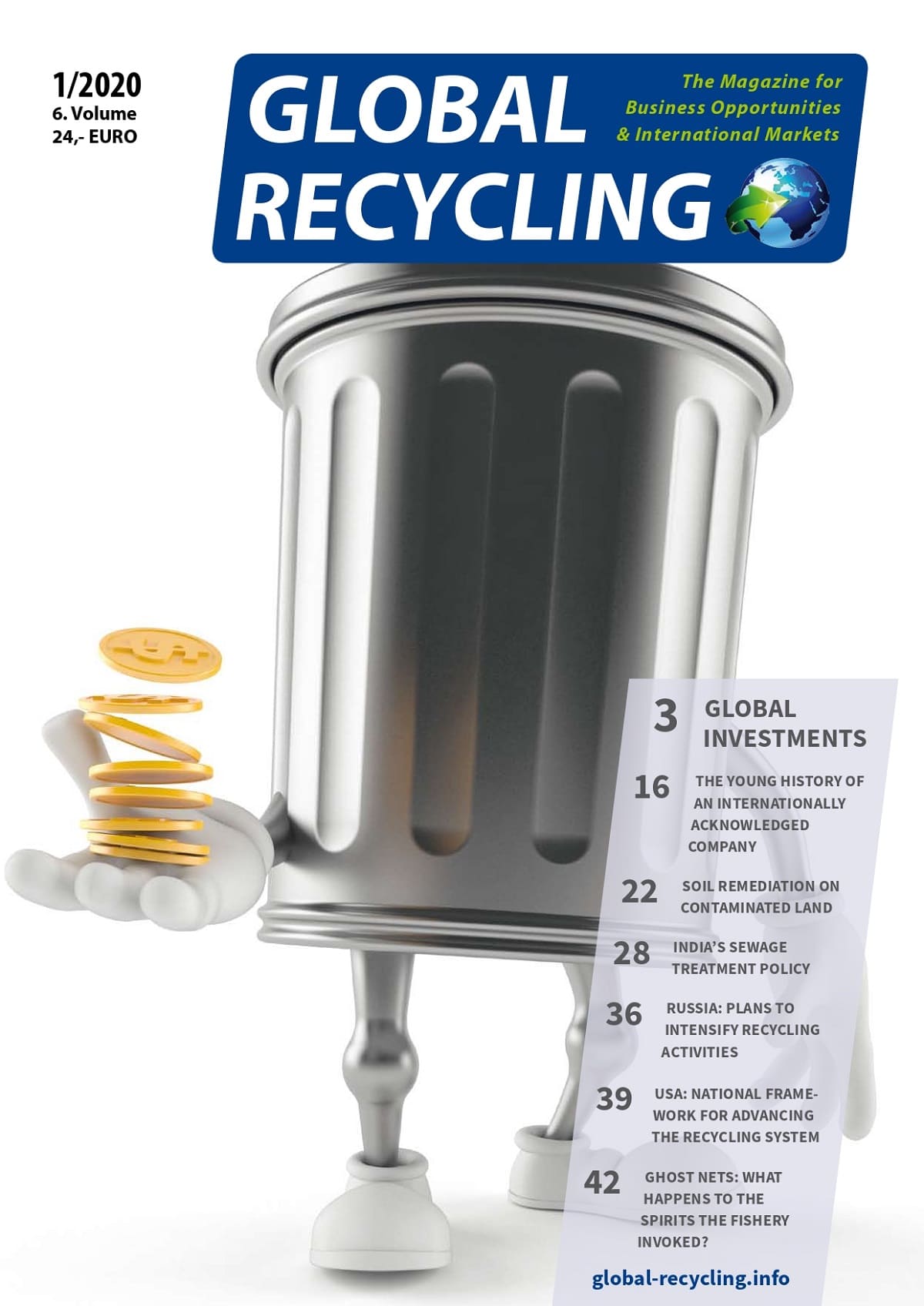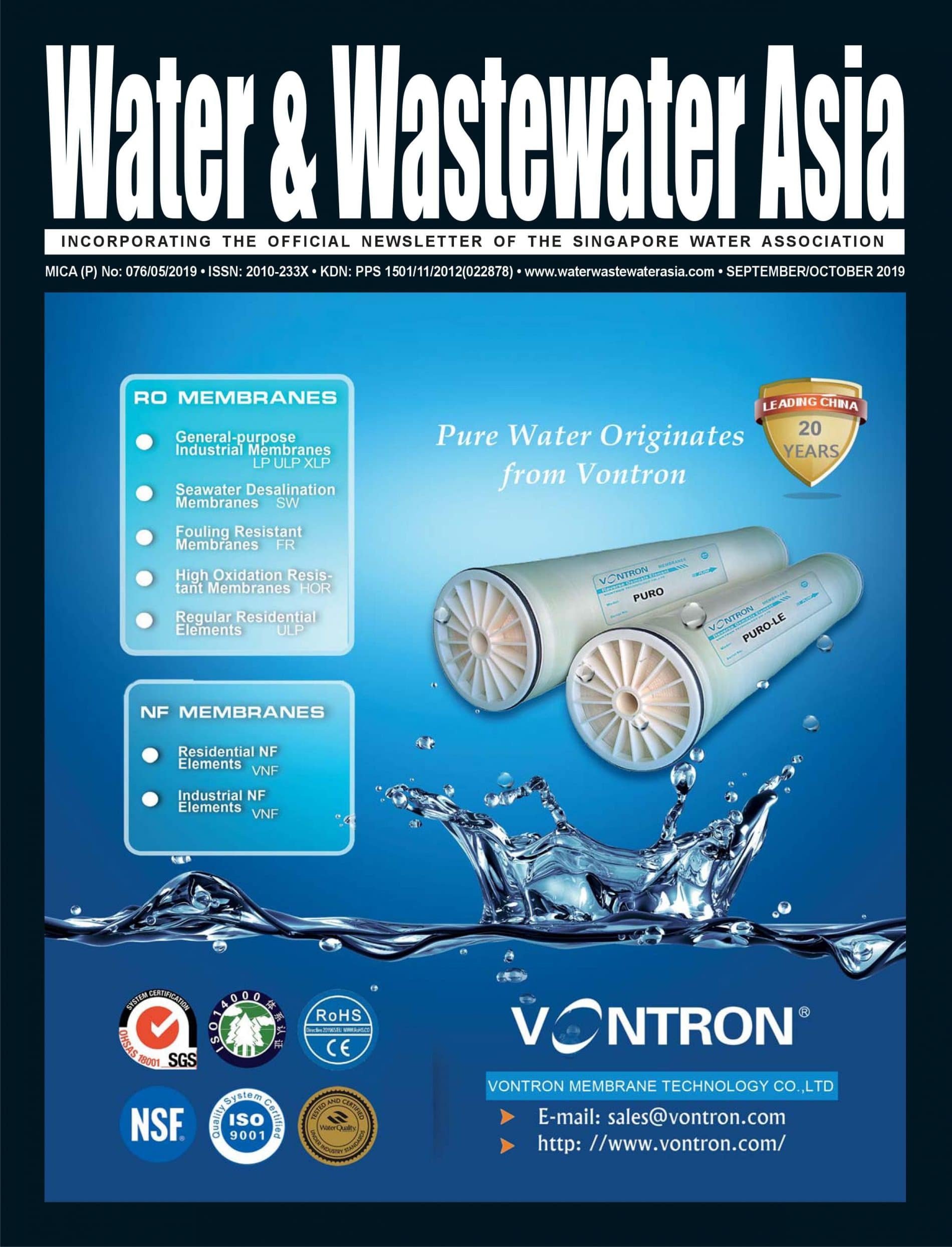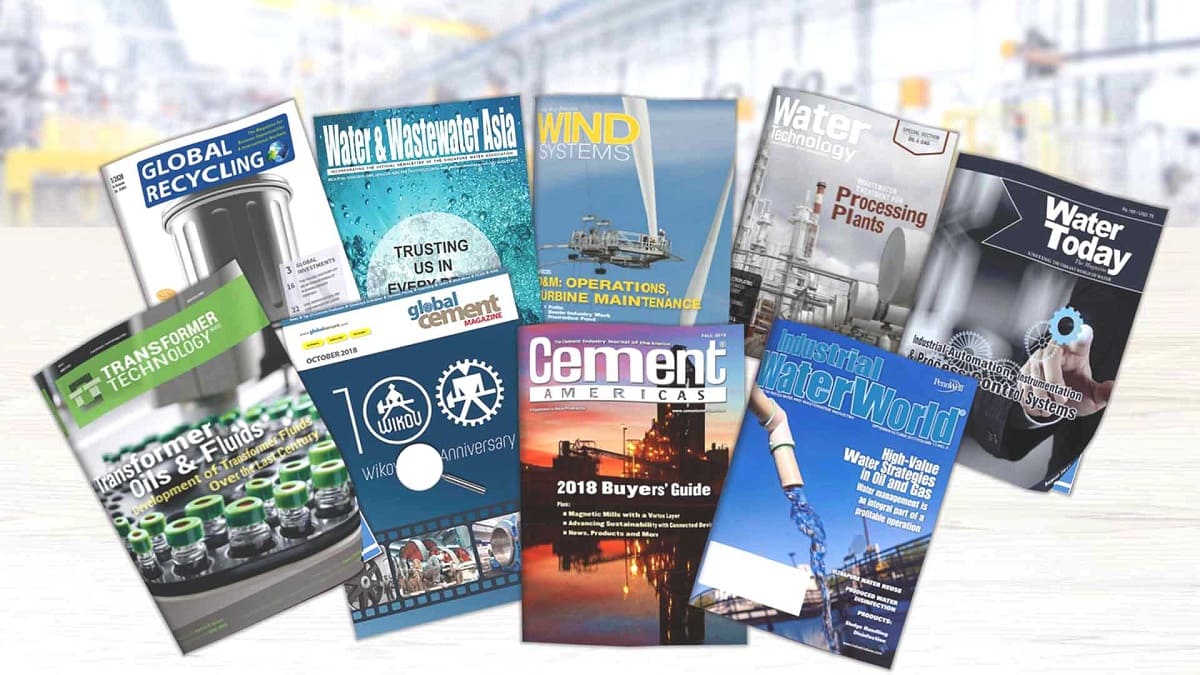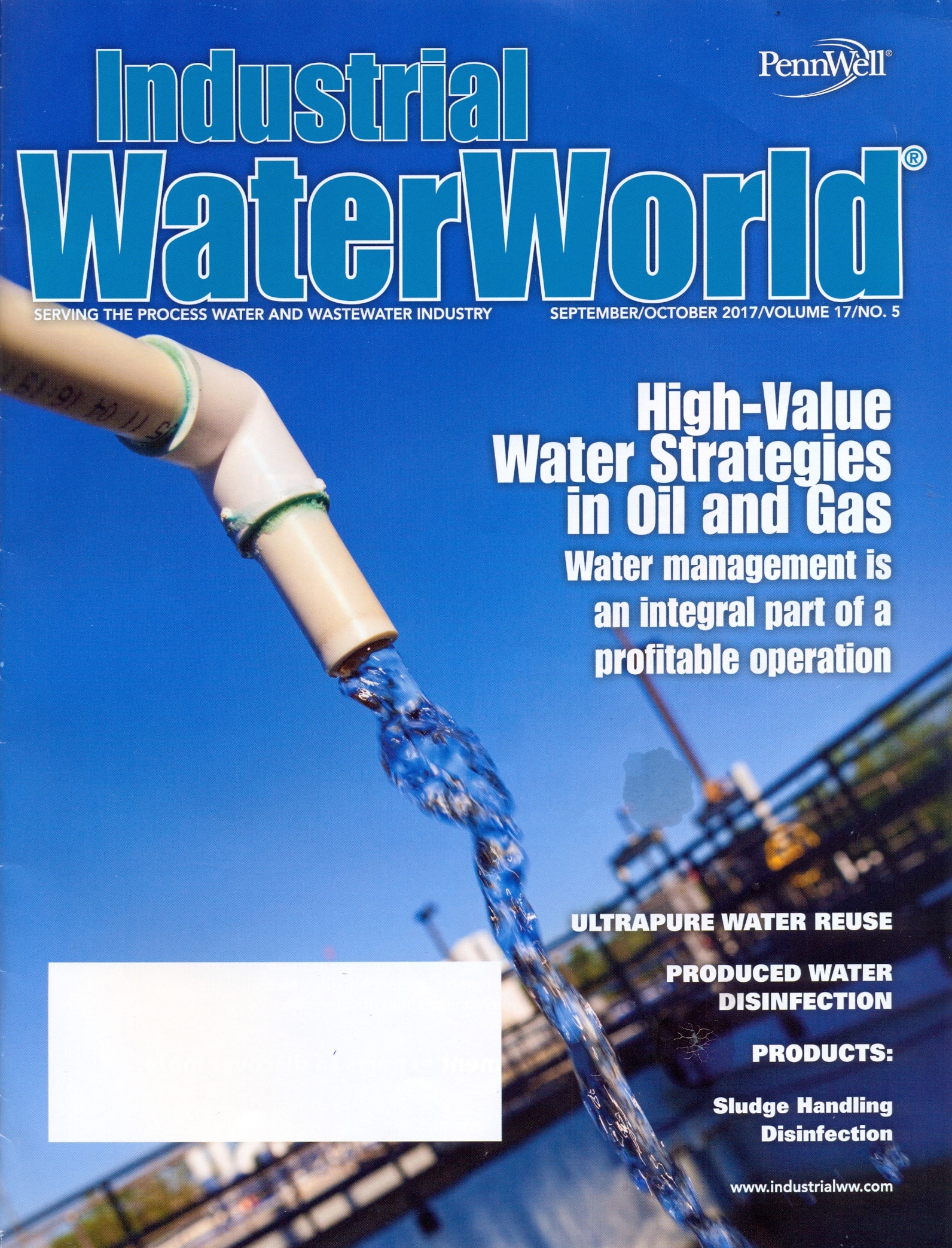AVS-150 Chemical Mixing Machine
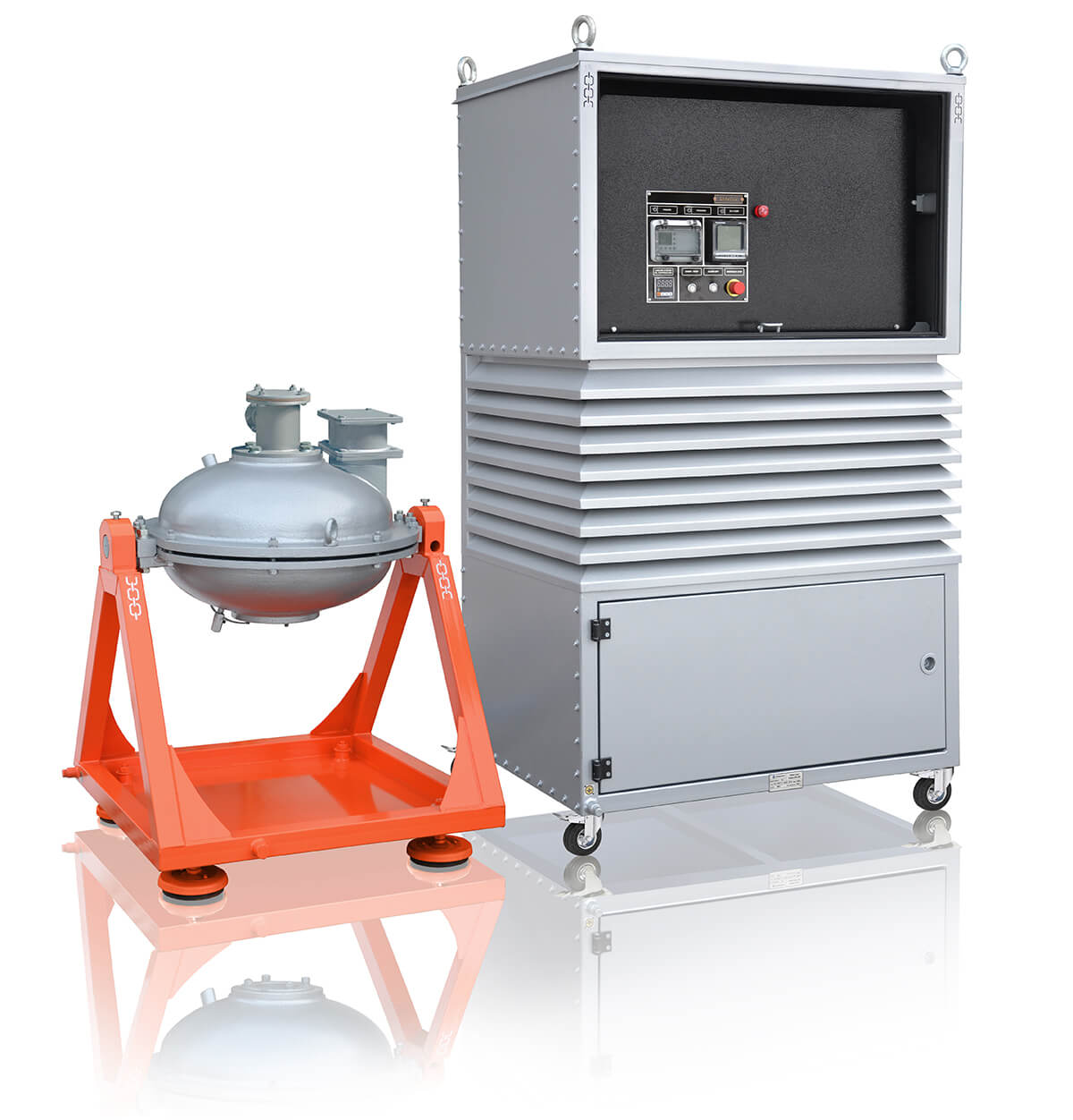
AVS-150
-
Adavantages
- simultaneous pulverization, mixing and activation of processed media;
- super-fine pulverization;
- process intensification. Retention times measured in fractions of a second;
- reduced power consumption;
- raw material economy;
- simple to retrofit into existing processing lines.
GlobeCore is the world’s only high-tech company for production of operating vortex layer devices with real applications in the industrial sector which deliver the expected results.
The Chemical Mixing1In industrial process engineering, mixing is a unit operation that involves manipulation of a heterogeneous physical system with the intent to make it more homogeneous. Machine operates on the principle of transforming the energy of electromagnetic field2An electromagnetic field (also EMF or EM field) is a physical field produced by electrically charged objects. It affects the behavior of charged objects in the vicinity of the field. into other forms of energy. The unit is a chamber (pipeline) of 90-136 mm diameter, located inside rotating electromagnetic field inductor3An inductor, also called a coil, choke, or reactor, is a passive two-terminal electrical component that stores energy in a magnetic field when electric current flows through it.. There are ferromagnetic4Ferromagnetism is the basic mechanism by which certain materials (such as iron) form permanent magnets, or are attracted to magnets. cylindrical elements of 0.5 – 5 mm diameter and 5 – 60 mm length in the operating area, from several dozen to several hundred (0.05 – 5 kg), depending on the volume of the work zone.
The chamber can be designed in several ways depending on the requirements of the processes in the chamber.
For liquid phase processes, strainers are installed on the sides of the bush, or at outlet end only. If fibrous materials are processed, labyrinth type strailers are installed. These devices hold the ferromagnetic particles in the work zone.
Consumption of energy in the chamber is defined only by its design, material and the thickness of the walls and does not depend on magnetic field strength. To reduce energy consumption, we manufacture the chamber from a non-magnetic material (stainless steel).
The rotating electromagnetic field causes the ferromagnetic elements in the work zone to move and create the so called “vortex layer”
The main components of electromagnetic units with vortex layer are: the inductor of rotating electromagnetic field with cooling system, connected to three phase 380/220V, 50Hz power supply, and operating chamber with ferromagnetic elements.
Chemical Mixing Machine AVS-150 Technical characteristics
Chemical Mixing Machine AVS-150 with ferromagnetic elements are designed to intensify5An intensification is an increase in strength or magnitude (or intensity). various physical and chemical processes.
The units can be efficiently used for
- production of multicomponent emulsiosn6An emulsion is a mixture of two or more liquids that are normally immiscible (unmixable or unblendable). and suspensions7A suspension is a heterogeneous mixture that contains solid particles sufficiently large for sedimentation.;
- acceleration of production of finely dispersed8A dispersion is a system in which distributed particles of one material are dispersed in a continuous phase of another material. The two phases may be in the same or different states of matter. mixtures;
- activation9Activation generally refers to the process whereby something is prepared or excited for a subsequent reaction. of materials both in dry form and dispersed in water;
- leading to improcved properties of resin and decreased vulcanizing time;
- for complete purification of industrial waste water10Wastewater (or waste water) is any water that has been affected by human use. from phenol, formaldehyde, heavy metals11Heavy metals are generally defined as metals with relatively high densities, atomic weights, or atomic numbers., arsenic, cyanides;
- acceleration of heat treatment;
- production of protein material from yeast cells;
- improvement of microbiological stability of food products and activation of yeast in bread baking;
- improvement of crude products and finished products from meat and fish;
- intensification of extraction12An extract is a substance made by extracting a part of a raw material, often by using a solvent. processes, including production of broth, juice, pectin etc;
- production of suspensions and emulsion of increased microbiological safety in food production without the used of staibilizers and increase of product output.
-
Chemical Mixing Machine AVS-150 could be used as:



